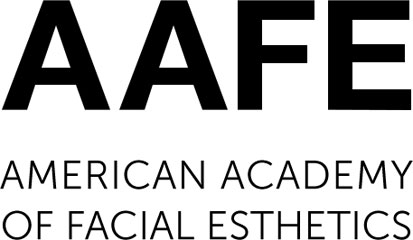Understanding Tooth Extractions at Holmes Dental
Tooth extraction is a frequently performed dental procedure that entails extracting a tooth from its socket. Despite sounding intimidating, tooth extractions are frequently essential to treat significant damage or decay that cannot be fixed using other restorative techniques.
At Holmes Dental, we prioritize maintaining oral health and provide patients with necessary dental treatments to protect their well-being. This blog post delves into the fundamentals of tooth extractions, preparing for the procedure, expectations during the extraction, and post-procedure care.
Different Types of Tooth Extractions
Various tooth extraction methods are available for patients, with some of the most common ones outlined below:
- Simple Extraction: This type of extraction is performed when a tooth is visible above the gums and can be easily removed in one piece. It involves loosening the tooth with specialized dental instruments and gently lifting it from the socket.
- Surgical Extraction: When a tooth is impacted, severely damaged, or broken off at the gum line, a surgical extraction may be necessary. This procedure requires the removal of gum tissue or bone to access and remove the tooth. In some cases, the tooth may need to be extracted in pieces to ensure a safe and successful procedure.
- Wisdom Teeth Extractions: This surgical procedure is frequently performed to extract wisdom teeth, also referred to as third molars, which commonly present issues upon emerging in adulthood. Misalignment, impaction, and overcrowding are typical problems associated with these teeth, potentially resulting in oral health issues. It is essential to remove these problematic teeth to uphold oral health and avoid future complications.
Preparing for Your Tooth Extraction
Preparing for a tooth extraction involves several steps to ensure a smooth and successful procedure. Here is a step-by-step guide to help you prepare:
- Follow any pre-operative instructions provided by your dentist or oral surgeon. This may include fasting for a certain period before the procedure.
- Arrange for someone to accompany you to and from the dental clinic, especially if you will be receiving general anesthesia or conscious sedation.
- Wear comfortable clothing and avoid wearing any jewelry or accessories that may interfere with the procedure.
- Inform your dentist or oral surgeon about any medications or supplements you are taking, as they may interact with the anesthesia or affect the healing process.
- Make sure to brush and floss your teeth before the procedure, as maintaining good oral hygiene is essential for a successful extraction.
By following these guidelines, you can ensure that you are properly prepared for your tooth extraction procedure and increase the chances of a smooth and comfortable experience.
What to Expect During Your Consultation at Holmes Dental
During your consultation at Holmes Dental, you will meet with an experienced oral surgeon who will evaluate your specific dental condition and discuss the best course of treatment. The consultation is an important step in the tooth extraction process as it allows the oral surgeon to assess your oral health, understand your dental history, and address any concerns or questions you may have. The oral surgeon will carefully examine the affected tooth and surrounding structures, take X-rays if necessary, and discuss the potential risks and benefits of the tooth extraction. You will also have the opportunity to discuss any dental pain or discomfort you may be experiencing and the risk of infection associated with the tooth extraction. The oral surgeon will ensure that you are fully informed and prepared for the procedure, providing you with personalized care and guidance throughout the process.
The Tooth Extraction Process
The process of extracting a tooth includes various steps to guarantee a safe and effective procedure. Here is a detailed guide to help you understand the steps involved in this process.
- Numbing the area: The dentist or oral surgeon will administer a local anesthetic to numb the extraction site, ensuring that you do not experience any pain during the procedure.
- Loosening the tooth: Specialized dental instruments will be used to gently loosen the tooth from its socket. This process may involve applying controlled pressure or rocking the tooth back and forth.
- Removing the tooth: Once the tooth is sufficiently loosened, the dentist or oral surgeon will carefully lift it from the socket using forceps or dental elevators. In some cases, the tooth may need to be extracted in pieces to ensure a safe and successful procedure.
- Cleaning the extraction site: After the tooth is removed, the extraction site will be carefully cleaned to remove any debris or infection. The dentist or oral surgeon may also smooth out any sharp edges to promote healing.
- Stitches and post-extraction care: Depending on the case, stitches may be placed to close the extraction site and aid in healing. The dentist or oral surgeon will provide you with post-extraction care instructions, including information on pain management, oral hygiene, and follow-up appointments.
Post-Extraction Care and Recovery
It is crucial to provide appropriate care following a tooth extraction to ensure a successful and smooth recovery. Adhering to the guidance given by your dentist or oral surgeon is vital in reducing complications and supporting the healing process. Listed below are some suggestions for caring for the extraction site in the first 24 hours after the procedure.
- Keep the gauze in place: Leave the initial gauze in the extraction site for at least 20-30 minutes to allow a blood clot to form. Replace the gauze if it becomes soaked with blood.
- Apply an ice pack: Use an ice pack or a cold compress on the outside of the face to reduce swelling and discomfort. Apply it for 20 minutes at a time, with 20-minute breaks in between.
- Eat soft foods: Stick to a soft food diet for the first 24 hours to avoid dislodging the blood clot. Choose foods such as yogurt, mashed potatoes, soups, and smoothies.
- Protect the blood clot: Avoid rinsing your mouth vigorously, using straws, or spitting forcefully, as these actions can dislodge the blood clot and delay healing.
Long-Term Healing: Tips for a Smooth Recovery
Long-term healing after a tooth extraction requires proper care and attention. Here are some helpful tips for a smooth recovery:
- Maintain good oral hygiene: Continue to brush and floss your teeth, being careful around the extraction site. Use a soft-bristled toothbrush and avoid vigorous rinsing.
- Manage discomfort: Over-the-counter pain relievers, such as acetaminophen or ibuprofen, can help manage any residual discomfort after the first 24 hours. Follow the recommended dosage instructions.
- Eat a balanced diet: Gradually introduce solid foods back into your diet as you feel comfortable. Include foods that are rich in nutrients to support the healing process.
- Protect the extraction site: Avoid irritating the extraction site by touching it with your tongue or any foreign objects. Be gentle while brushing and flossing to prevent injury to the healing gum tissue.
Risks and Complications: What Patients Need to Know
It is crucial for patients to be informed about the potential risks and complications associated with tooth extractions before undergoing the procedure. Discussing these aspects with your dentist or oral surgeon is essential for making a well-informed decision.
Common Risks Associated with Tooth Extractions
- Dry Socket: This occurs when the blood clot that forms in the extraction site dissolves or becomes dislodged, exposing the underlying bone. Dry socket can cause severe pain and delay the healing process.
- Infection: Infection can occur if bacteria enter the extraction site. Symptoms may include persistent swelling, pus, redness, or fever. Prompt treatment with antibiotics is essential.
- Bleeding: Some bleeding is normal after a tooth extraction, but persistent or excessive bleeding may indicate an issue. Applying gentle pressure with gauze can help control bleeding.
- Complications: Rarely, complications such as nerve injury or perforation of the maxillary sinus may occur. Your dentist or oral surgeon will take precautions to minimize these risks.
How Holmes Dental Minimizes and Manages Complications
At Holmes Dental, we prioritize patient safety and take every precaution to minimize and manage complications associated with tooth extractions. Here are some ways we ensure a safe and successful procedure:
- Antibiotics: In certain cases, we may prescribe antibiotics to reduce the risk of infection before or after the extraction.
- Careful Monitoring: Our experienced dental professionals closely monitor patients during the extraction process, ensuring proper anesthesia, pain management, and overall well-being.
- Surgical Precision: Our team utilizes advanced techniques and follows strict surgical protocols to ensure precise and efficient extractions.
- Patient Education: We provide comprehensive pre- and post-extraction instructions to our patients, ensuring they understand the importance of following these guidelines for a smooth recovery.
By employing these measures, we strive to minimize complications and provide our patients with a safe and comfortable tooth extraction experience.
Schedule Your Consultation Today With Holmes Dental
Understanding the process and importance of tooth extractions is vital for your dental health. Whether it’s a necessary procedure or part of your dental care plan, Holmes Dental ensures a comfortable experience from preparation to post-extraction care. With advanced techniques for painless extractions and a focus on minimizing complications, your well-being is their priority. Trust in the expertise of Holmes Dental for a smooth and successful tooth extraction journey. Your smile deserves the best care. Schedule your consultation today by contacting our office.

 Dan Holmes, DDS
Dan Holmes, DDS Nicole Holmes, DDS
Nicole Holmes, DDS Our Team
Our Team



